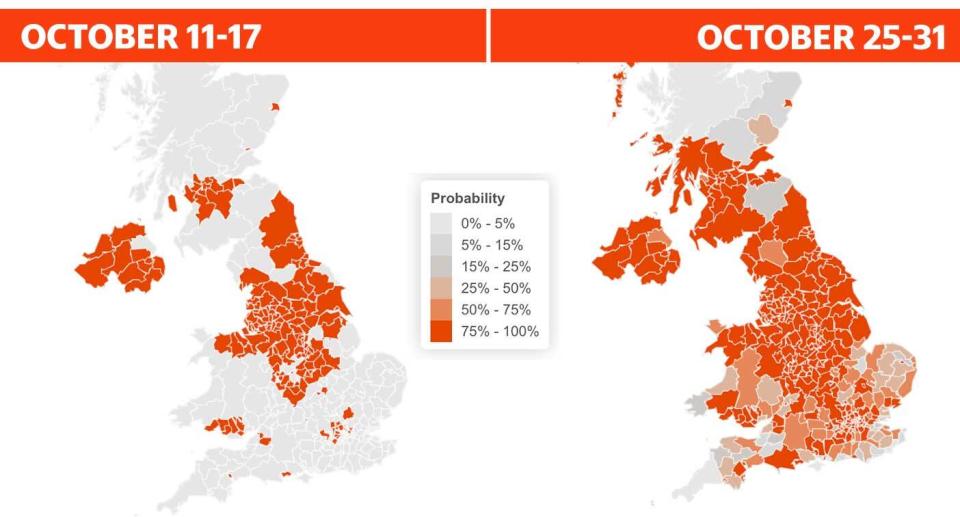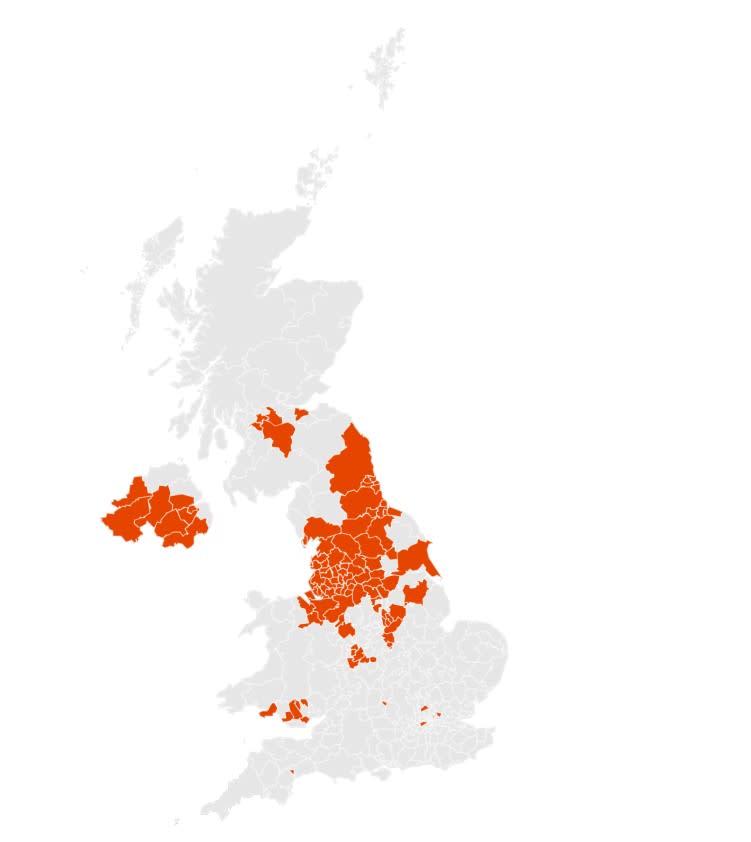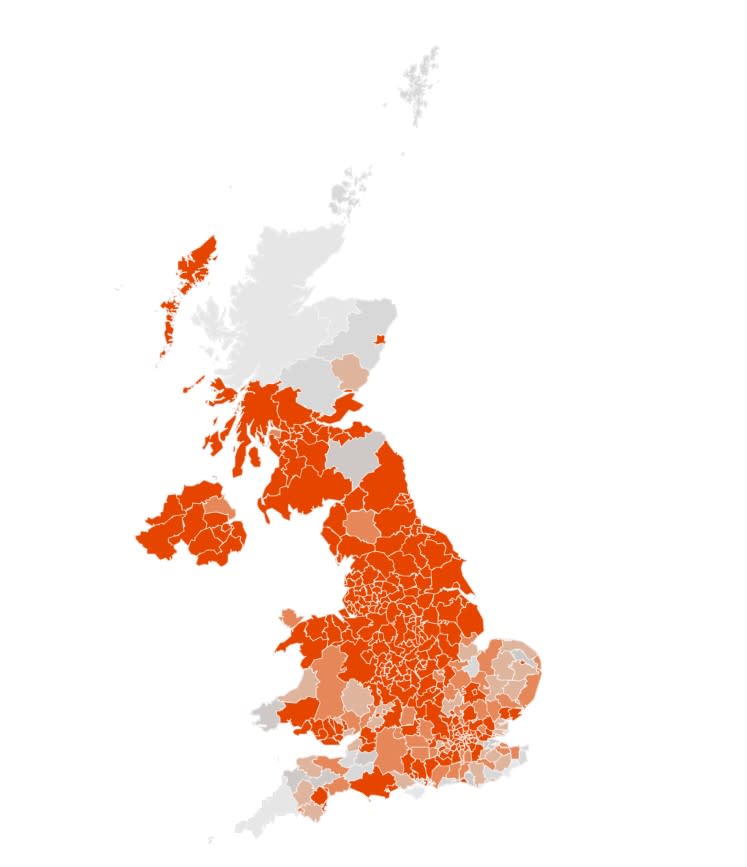The parts of UK most likely to be COVID hotspots by the end of October


An interactive map predicting the UK’s next likely COVID hotspots suggests swathes of the country are likely to have more cases than areas that have already been plunged into the Tier 2 level of restrictions.
On Thursday, Matt Hancock announced London, Essex, York and other areas would be raised to a Tier 2 – or ‘high’ – level of lockdown. The capital currently has an average of 97 cases per 100,000 with the health secretary warning the number is “rising sharply.”
While there are a number of factors that determine what tier of restrictions an area is placed into – including the number of infections and how quickly they are rising – researchers at Imperial College London believe the majority of the UK is likely to be in the red zone by the end of October.
The map below shows the areas which currently have 100 cases or more per 100,000. The second map below shows the probability of places having more than 100 cases per 100,000 by the end of the month.
Read more: Map shows the parts of England under strict COVID lockdown rules


Their predictions, which are driven by an algorithm, have changed significantly since the website was launched at the start of September, with its latest update on Wednesday predicting sharp increases in coronavirus cases predicted across the country.
The team behind the website initially defined a hotspot as a local authority where there are more than 50 cases of COVID-19 per 100,000 of the population per week.
Since the situation in the UK has deteriorated rapidly they now have a variety of hotspot scales, from 50 to 500 per 100,000.
Watch: Coronavirus: More areas of England to move to 'high risk' Tier 2 lockdown restrictions
Almost the entire nation is expected to have over 50 cases per 100,000 by the end of October, with the vast majority seeing over 100 per 100,000.
The latest data shows COVID-19 cases in England have been “rising steeply” over the past six weeks, with 89,874 people testing positive in seven days.
Large parts of the north of England, central Scotland, and Northern Ireland are predicted to have over 500 cases per 100,000 by the end of October.
All of the places currently under lockdown in the North are expected to see their cases remain or rise over 500 per 100,000 with several university towns like Cardiff, Exeter and Bristol also included.
Read more: The Tier 2 exemption which means some people can still visit their best friend at home

Currently, only five places have more than 500 cases per 100,000 - Nottingham, Knowsley, Liverpool, Burnley, and Newcastle.
Nottingham is the highest with 954 cases of coronavirus per 100,000 people.
Manchester, Sefton, and Sheffield are all close to 500 cases per 100,000.
The government has moved quickly to implement its new tier system for local lockdowns with large parts of the north of England and the Midlands put under enhanced measures on Wednesday night.
For most of the areas the rules did not change too much, with all mixing with other households indoors banned.
The Liverpool City Region was the only area placed under a Tier 3 lockdown, which meant pubs, restaurants, gyms and other venues had to close.
It is understood the government is strongly considering putting Manchester onto a Tier 3 lockdown, despite protests from local leaders.
Read more: 'Too late' for half-term circuit breaker lockdown to now work, says SAGE expert
London Mayor Sadiq Khan has been more accepting of the need for the city to be put under Tier 2, but called for more financial support.
Hancock said action was needed because cases in the capital were doubling every 10 days
He said: “We know from the first peak, the infection can spread fast and put huge pressures on the NHS so we must act now to prevent the need for tougher measures later on.
“So working closely with the mayor, with cross-party council leadership, with local public health officials and the national team, we’ve together agreed that London needs to move to local Covid alert level high.”
Hancock thanked those who work and live in the capital, adding: “We all need to play our part in getting the virus under control once again.”
With London being raised to Tier 2, just under half of the population of England will be subject to enhanced measures.
Watch: Can you catch coronavirus twice?
Coronavirus: what happened today
Click here to sign up to the latest news and information with our daily Catch-up newsletter

 Yahoo Movies
Yahoo Movies 